Key takeaways:
- Agile methodology promotes flexibility and rapid adaptation through iterative cycles, enhancing collaboration and user feedback.
- Waterfall methodology provides a structured approach with clear phases and thorough documentation, making it beneficial for projects with fixed requirements.
- Personal preference leans towards Agile due to its ability to foster creativity and dynamic team interaction.
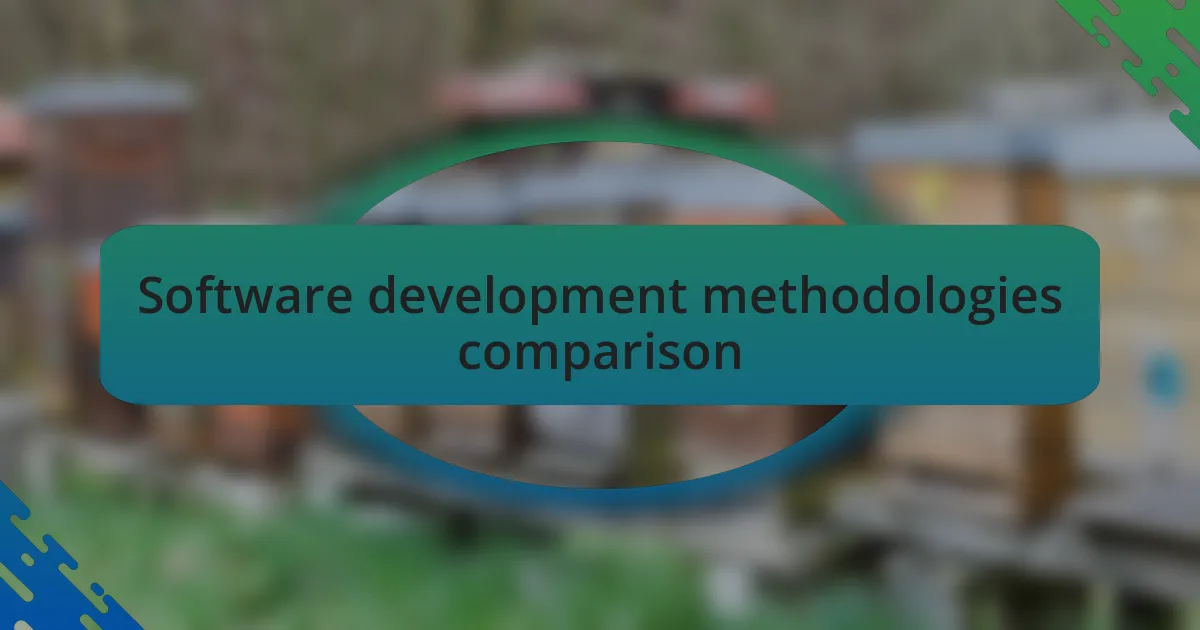
Software development methodologies comparison
When comparing Agile and Waterfall methodologies, it’s essential to understand their fundamental differences. Agile fosters flexibility and quick adaptations, which I find to be particularly beneficial in fast-paced environments. Have you ever been in a project where requirements shifted suddenly? In those moments, Agile’s iterative cycles and constant feedback really help keep things on track.
On the other hand, the Waterfall approach is like following a well-laid path. I remember a project where we meticulously planned every phase, only to realize halfway through that crucial details were overlooked. The structured nature of Waterfall made it clear what our deadlines were, but the rigidity sometimes felt constraining. Do you prefer that sense of security in planning, or does the freedom of Agile resonate more with your style?
Each methodology serves its purpose depending on the project’s requirements and team dynamics. Personally, I often lean towards Agile for projects involving innovation, where rapid testing is key. But isn’t it also fascinating how Waterfall can shine in projects with well-defined requirements, such as regulatory software, where every step must adhere to strict guidelines? This contrast highlights how choosing the right methodology can influence not just outcomes, but the overall experience of the development journey.
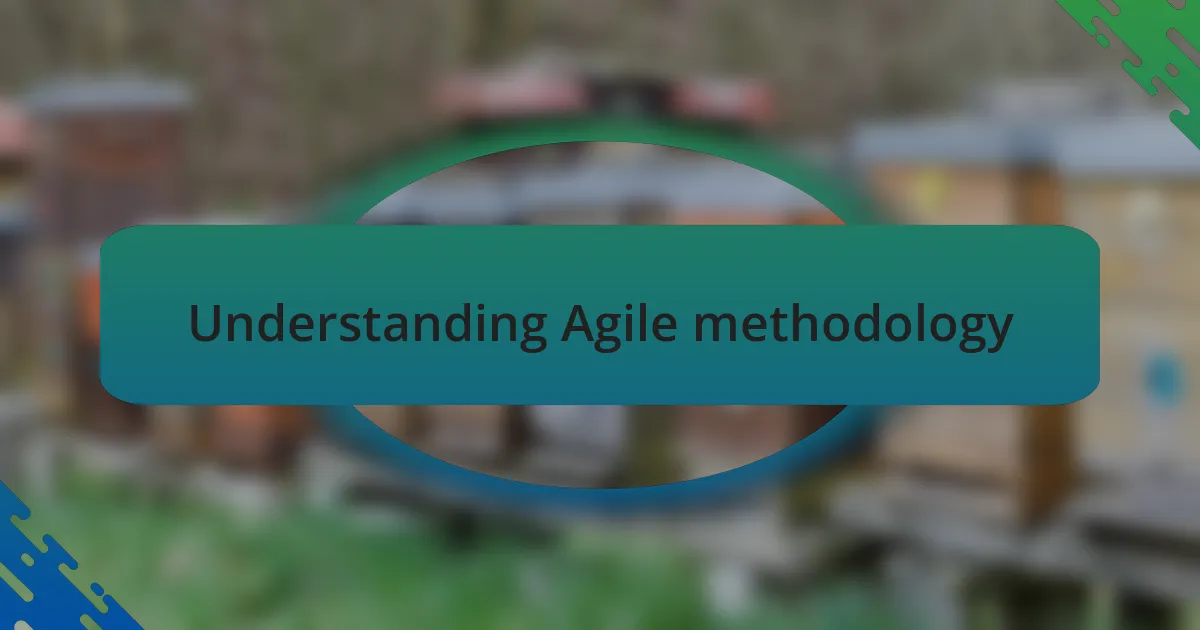
Understanding Agile methodology
Agile methodology revolves around iterative development, breaking the project into smaller, manageable tasks known as sprints. Each sprint culminates in reviews, allowing teams to adapt rapidly. I once participated in a project where we shifted directions based on stakeholder feedback after just two weeks. That adaptability made the final product much stronger and more aligned with user needs.
Collaboration is at the heart of Agile. Daily stand-up meetings, for instance, create a transparent environment that encourages open communication. I still remember the energy in those morning check-ins, where sharing challenges not only sparked ideas but also fostered a supportive team spirit. It’s intriguing how these moments of connection can lead to breakthroughs in problem-solving, don’t you think?
Agile thrives on customer involvement throughout the development process, which can be both thrilling and daunting. I vividly recall a project where constant client feedback reshaped our direction dramatically. There were times I felt overwhelmed, but ultimately, that close collaboration resulted in a product that truly met the users’ needs. This continual engagement emphasizes the importance of aligning with the end-user, making each iteration a valuable opportunity for growth and learning.
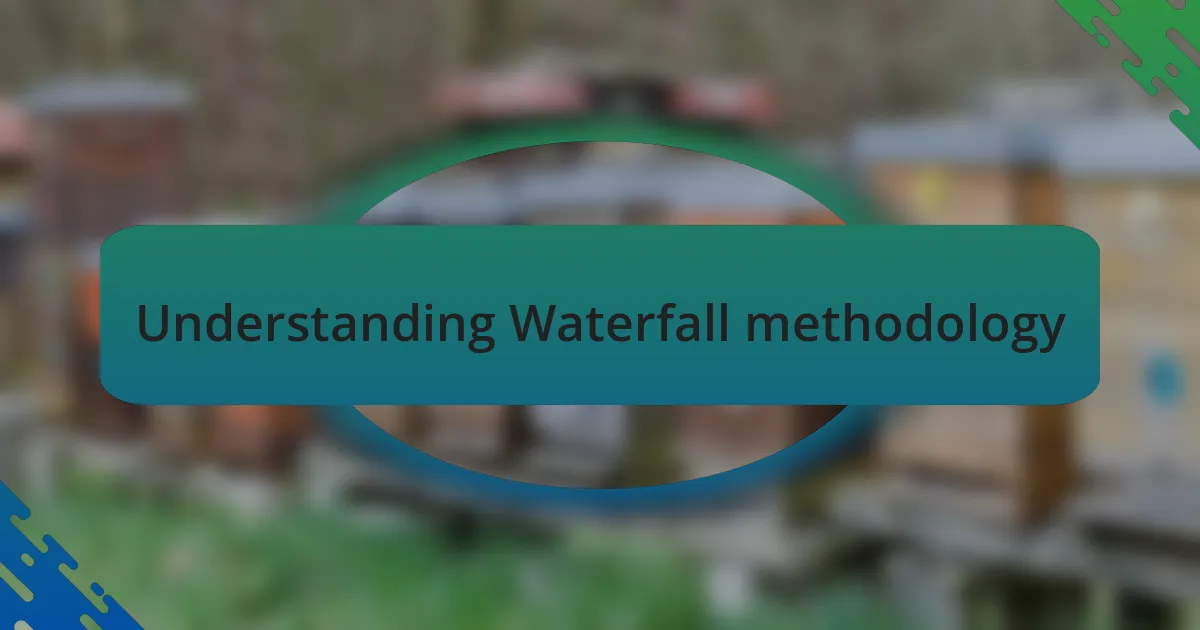
Understanding Waterfall methodology
Waterfall methodology is a linear approach to project management that unfolds in distinct phases, typically including requirement analysis, design, implementation, verification, and maintenance. Each phase must be completed before the next one begins, creating a structured environment that some teams find comforting. I recall working on a project that followed this method; it felt like building a house where the foundation had to be perfectly laid before we could even think about walls or a roof.
While this sequential structure can enhance clarity and organization, it may also lead to challenges, especially if requirements change midway. In my experience, a shift in client expectations after we had locked down design specs caused a ripple effect in our timeline. Those moments made me ponder whether the rigid nature of Waterfall limits the project’s potential for adaptation.
Moreover, documentation plays a crucial role in the Waterfall model, as each phase’s outcomes are thoroughly recorded for reference in later stages. I’ve found that having detailed documentation provides a safety net, ensuring everyone is on the same page. Yet, I sometimes wonder: does all that emphasis on paperwork stifle creativity and innovation? It’s a fine balance, and from my perspective, understanding these dynamics is essential for anyone embarking on a Waterfall project.
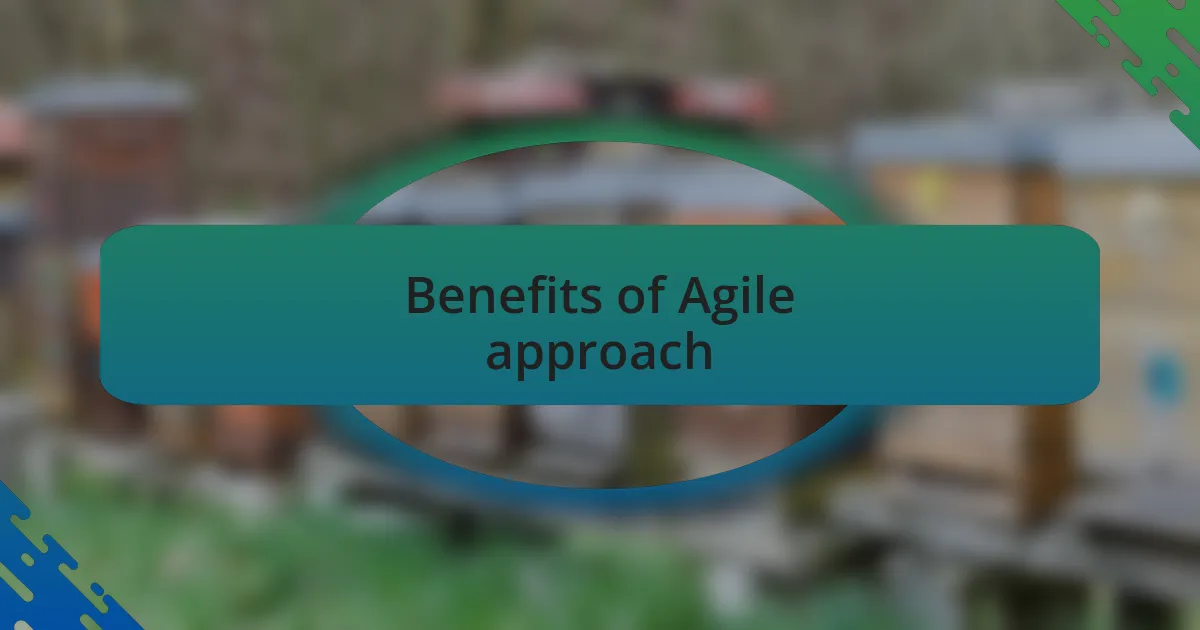
Benefits of Agile approach
Adopting the Agile approach can significantly enhance team collaboration and communication. When I transitioned to Agile, I noticed a palpable shift in how my team interacted. Daily stand-ups turned into opportunities for sharing not just project updates but also challenges and ideas, fostering a sense of camaraderie and collective problem-solving. How often have you felt isolated in a project? In Agile, that feeling swiftly dissipates as everyone collaborates and champions the shared goal.
Flexibility is another defining benefit of Agile. Changes in requirements are not just accepted; they are embraced. I remember a pivotal project where client feedback led us to pivot our strategy mid-cycle. Rather than feeling chaotic, it felt invigorating. Being able to iterate and adapt rapidly showed me how powerful responsiveness can be. It’s almost like navigating a winding road rather than a straight path; each twist becomes an opportunity for discovery.
Lastly, Agile encourages a strong focus on delivering value incrementally. Instead of waiting until the end of a long process for results, Agile teams provide working features early on. This was particularly thrilling in my experience when we launched a minimum viable product (MVP) that garnered immediate user feedback. It transformed the development cycle into a continuous loop of improvement. Isn’t it rewarding to hear users rave about something you’ve built, even if it’s just the first step? Agile makes that kind of engagement not just possible but customary.
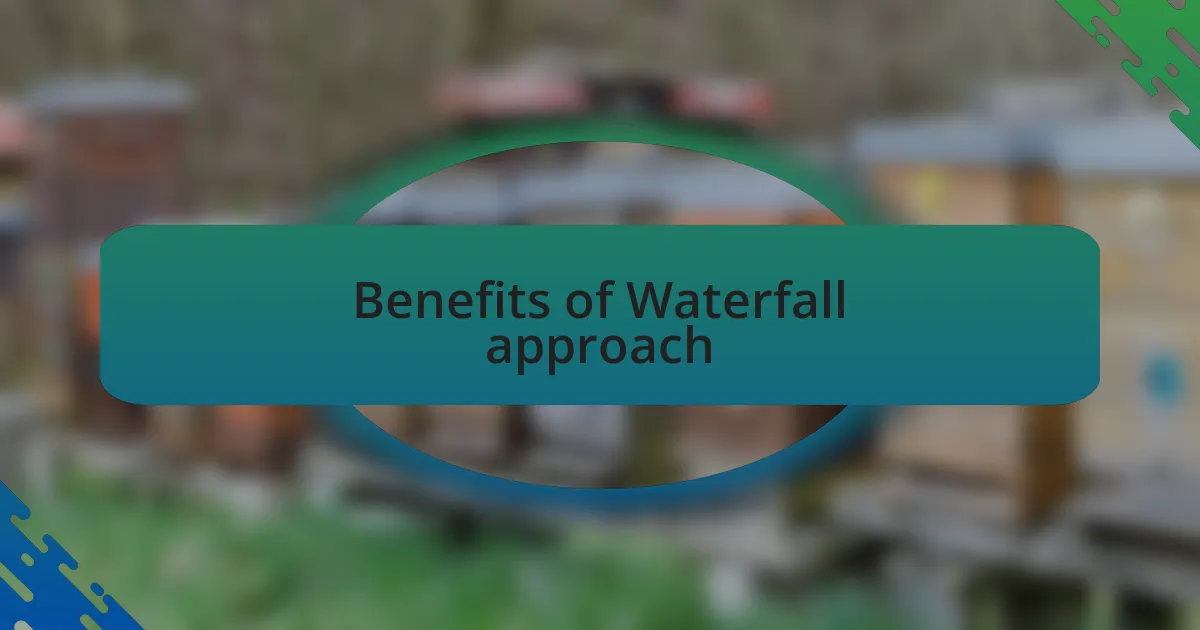
Benefits of Waterfall approach
When I reflect on the Waterfall approach, one primary benefit stands out: clarity in project structure. The sequential nature of Waterfall allows everyone to understand the project flow from start to finish. I recall a time when my team utilized Waterfall for a government project, where having distinct phases made it easier for stakeholders to follow and approve each step. Isn’t it reassuring to know exactly what comes next in a project?
Another advantage I’ve encountered is the focus on thorough documentation. With Waterfall, every stage involves meticulous planning and documentation, which I found invaluable later on. For instance, during a later project review, the documentation from the initial phases clarified our decisions, making it easier to onboard new team members. Have you ever had to reconstruct the rationale behind design choices? Waterfall’s structured documentation can save precious time and confusion.
Finally, I appreciate the stability that Waterfall offers, especially for projects with fixed requirements. The predictability in timelines and budgets can provide a comforting sense of control. There was an instance when we managed a non-profit initiative that mandated strict adherence to a budget—using Waterfall ensured that we completed milestones on time, preventing any unpleasant surprises. Doesn’t it feel empowering to know you’re navigating on a straight path amidst the complexities of software development?
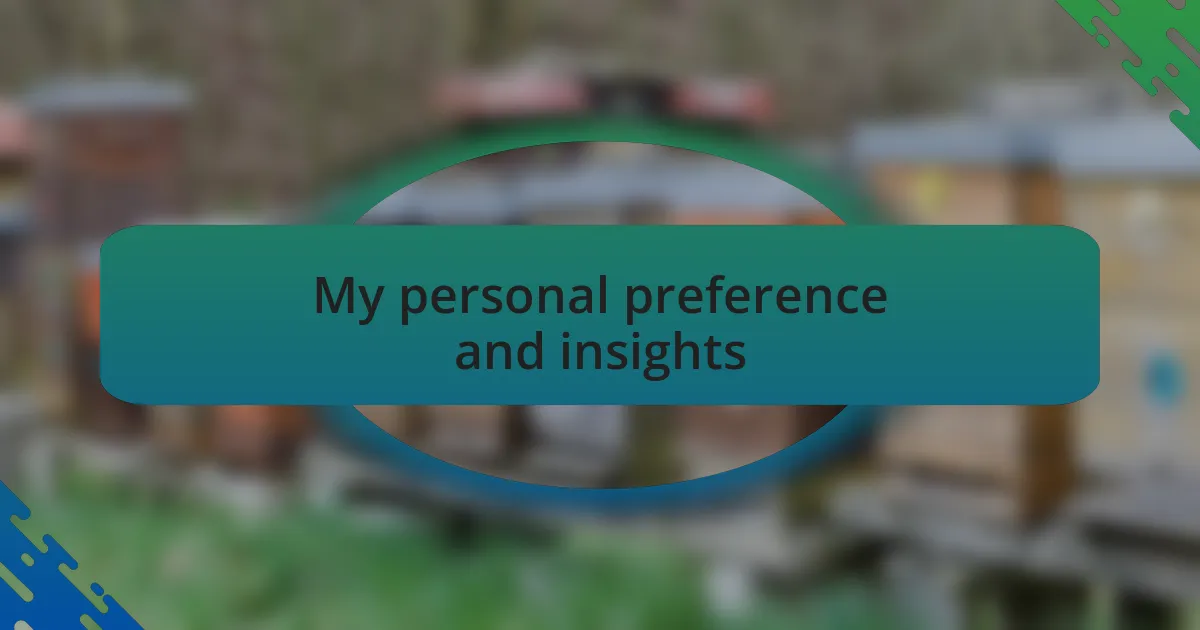
My personal preference and insights
When I think about my personal preference, Agile resonates with me more than Waterfall. The flexibility of Agile transforms how projects evolve—and I find that exciting. I once worked on a mobile app where the requirements changed regularly based on user feedback. This adaptability not only kept the project relevant but also sparked a sense of collaboration among the team. Isn’t it energizing to pivot quickly and respond to real-time insights?
In my experience, the iterative nature of Agile fosters creativity. I vividly remember brainstorming sessions where ideas flowed freely, and no one hesitated to suggest unconventional solutions. It felt liberating to compartmentalize efforts into small sprints, allowing room to experiment and refine features continually. Have you ever felt stifled by rigid processes? Agile lifts that weight, promoting a culture of innovation that I truly cherish.
Ultimately, my affinity for Agile may stem from its emphasis on team dynamics. During one project, frequent stand-up meetings cultivated a strong sense of camaraderie, allowing us to tackle challenges collectively. There’s something powerful about being in sync with your colleagues, sharing victories and setbacks alike. Isn’t that what makes the process of software development genuinely rewarding?